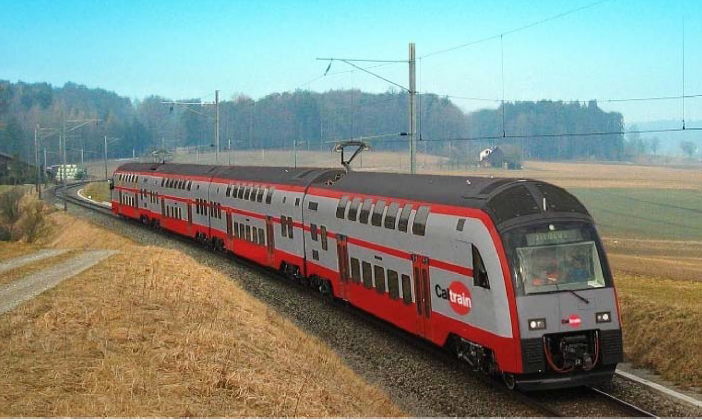
Both the city of Menlo Park and the town of Atherton have threatened to sue Caltrain over its planned conversion from diesel to electric trains, if certain conditions are not met. The municipalities requested a 30-day extension of the Friday deadline to file a lawsuit.
Menlo Park’s demands include increased service to its Caltrain station, “particularly during non-peak hours,” and for Caltrain to pay for “appropriately designed and built grade separation” to avoid delaying motorists at crossings. The city also wants Caltrain to list all of the significant and "heritage" trees that will be removed, and to replace them with three times as many 36-inch box trees.
Similarly, Atherton is demanding better Caltrain service. The town's station, located at Atherton Avenue, is the next station north of Menlo Park.
While the electrification plan does anticipate more frequent service at all Caltrain stations, agency officials say it’s far too early to commit to specific service levels with electric trains, which won't be running until 2020 at the earliest. By that time, Caltrain expects daily ridership to grow by over 15,000 trips and for travel patterns to change. In addition, the agency plans to conduct outreach on scheduling preferences closer to the completion of electrification.
“Increasing ridership based on threatened litigation is not how Caltrain should do service planning,” Friends of Caltrain Director Adina Levin wrote in a blog post about the letters last week. “With even less realism, Menlo Park is also demanding that Caltrain fund grade separations.”

Menlo Park wants to reconstruct Ravenswood Avenue to pass over or under the Caltrain tracks, which would cost at least $100 million, and as much as $500 million for a “trench” design lowering the tracks 30 feet below the street. With an annual operating budget of $125 million, Caltrain appears to have few resources to spend on grade separations, which make crossings safer and prevent delays for car traffic. The San Mateo County Transportation Authority has $225 million earmarked for grade separation projects, enough to fund four to five projects when combined with state and federal grants.
Menlo Park’s City Council also wants to rule out specific track designs for California High-Speed Rail (HSR), including "any blended system that results in an elevated structure, any future expansion that results in four tracks unless underground and any system which adds passing tracks in Menlo Park."
Despite its opposition, Menlo Park was awarded $750,000 by the SMCTA to study grade separation options on the condition that passing tracks are included, according to a May 2014 report from SMCTA Manager of Programming and Monitoring Joel Slavit [PDF].
Atherton Mayor Rick DeGolia, meanwhile, asserted in a January 26 letter to Caltrain that "the electrification project is separate from the high-speed rail project," and the city "remains concerned with the legality of moving forward with the electrification project without fully evaluating the environmental impacts associated with the high speed rail project."
“The impacts of high-speed rail in Atherton will be significant and the Town will continue to oppose the project,” he added.

Atherton also wants Caltrain to “formally commit to being a financial partner” in the installation of quad gates to block all four traffic lanes for passing trains at the Watkins Avenue rail crossing. According to the City Council’s January 21 staff report [PDF], the gates are “a precursor to the pursuit of a quiet zone for the Town,” which would allow trains to cross Watkins without blowing their horns. In addition, the town wants Caltrain to commit to building center-mounted electrical power poles to minimize tree removal, that “careful consideration of the Atherton Station” be provided, and that “modern diesel options” be studied in the environmental impact report.
Caltrain countered that its electrification project is separate from CAHSR because it has "independent utility," and that the project is exempt from the California Environmental Quality Act (CEQA) in any case.
Caltrain is expected to respond to both Menlo Park and Atherton regarding the final EIR by the end of this week.




